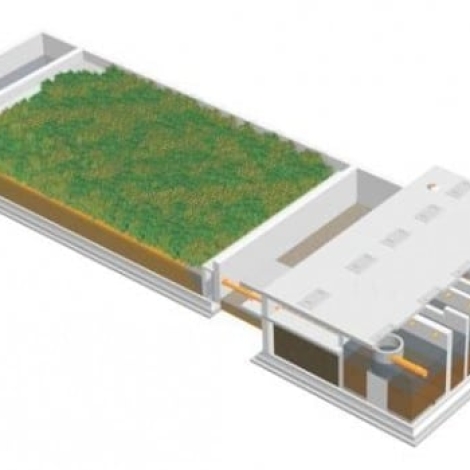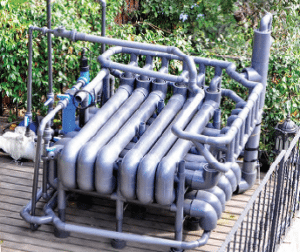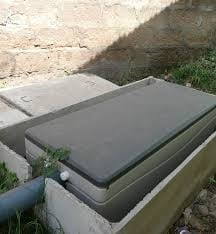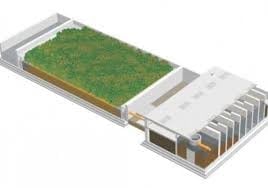Aerial photos reveal a plume of brown fecal sludge drifting off the coast at Lavender Hill in Accra, Ghana. Every day, trucks drive dump 250,000 gallons of untreated sewage on the beach, wastewater pumped from latrines in neighborhoods that do not have sewer lines. Susan Davis describes the disaster in the opening to a short but important piece at WASHfunders.org. Davis is the founder of Improve International and a contributing editor at Engineering for Change who wrote the first installment of a two-part series on the lack of wastwater treatment in developing countries and solutions to the problem.
“80% to 90% of wastewater… is discharged into rivers or oceans untreated. This means that 2 million tons of sewage, industrial and agricultural waste is discharged into the world’s waterways each year. The combination of increasing wastewater production, increasing population, and rapid urbanization will lead to an ugly situation if we don’t rethink wastewater management,” Davis writes.
The sector of water, sanitation and hygiene (WASH) has largely ignored wastewater until recently, focusing instead of increasing access to toilets. But now the problem has gained global notoriety and wastewater treatment is a part of the Sustainable Development Goals.
The second part, not yet published, will present a handful of solutions to the lack of wastewater treatment. The technologies are listed in E4C’s Solutions Library, where they can be compared to similar technologies side by side in a standardized format.
Craig Fairbaugh, an E4C Research Fellow, helped review the technologies and describes them in his forthcoming piece for WASHfunders.org. This is a brief preview.
Biopipe
The Biopipe is a decentralized pipe network that treats domestic wastewater for reuse in irrigation, comprised of a tank, pipe modules, circulation and water pumps, and a UV filter.
Biofil Digester
The Biofil Digester is housed in a 2’ x 2’ x 6’ concrete structure that rapidly separates liquid waste from solid as it filters through a layer of permeable pavement. The digester can be connected to an existing toilet or septic system and it is scalable to meet small or large demands.
DEWATS
BORDA’s Decentralized Wastewater Treatment System (DEWATS) uses physical and biological treatment mechanisms such as sedimentation, floatation, aerobic and anaerobic treatment to remove pathogens from household wastewater.






Good informative article to read
Hi the i am anthony bekeli eni looking at this situation is not good for our future even for life below water are not save. this is happening in my community everyday i have done everything possible to counsel this idea but it seems not working this a very good information here
Information is very valuable.